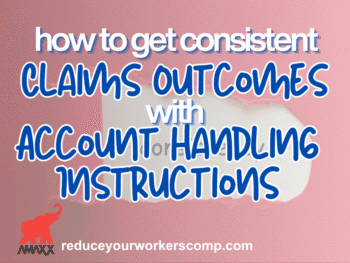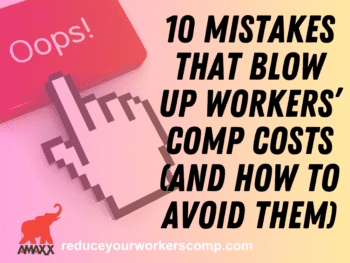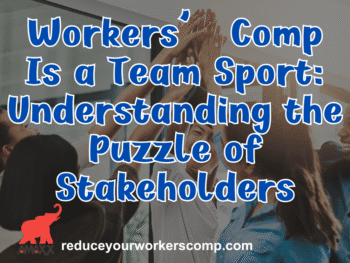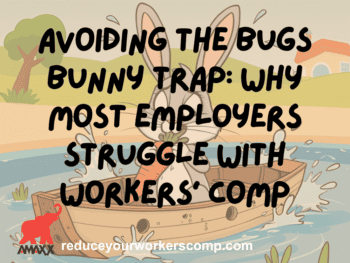More Myths & Realities of Workers Comp
Myth: If you have unions, you’ll never lower your workers compensation costs.
REALITY: Negotiating with a union can a successful experience, even if challenging.
Begin with a positive, cooperative, win-win attitude. Sit down and discuss the situation with the bargaining committee; educate them about workers’ comp and the need for transitional duty and they’ll usually facilitate the program.
They need to be aware staying out of work for extended periods of time normally doesn’t help an injured employee heal; in fact, the employee’s health often deteriorates because mental health can be compromised by depression once the employee loses a daily routine and social network.
Focus on the economic consequences and interests of the membership. For instance, if the majority of members are young, emphasize how the extra money helps them pay college tuition for their children. If members are older, emphasize how the savings helps their retirement accounts. Sometimes unions have very creative ideas about how a new transitional duty program can work well, and they’ll make you aware of collateral source benefits needing to be removed. In one instance recently, the union was angry with management because management hadn’t tried to do more to stop several fraudulent claims.
Myth: To get a slow claim “moving,” the best thing to do is request an Independent Medical Evaluation) (IME).
REALITY: Requesting an Independent Medical Evaluation can be a two-edged sword.
If a claim is “stalled,” it’s quite common for the adjuster to recommend getting an IME to get the status of the claimant.
Before a claim is sent for an IME, have your Medical Advisor review the claim, because in some cases, an IME may be effective and warranted, but sometimes a request makes it worse.
It makes is worse when the timing isn’t right, when inadequate medical records are included with the IME packet or when inadequate medical questions are asked of the doctor who is performing the IME.
You might want either consider an Functional Capacity Evaluation (FCE) instead or get a brief surveillance to “see” what capability (or lack of) the claimant has.
Myth: The best way to reduce workers’ compensation costs is to change insurance companies or third-party administrators (TPAs).
REALITY: Wrong! The best way to reduce workers compensation costs is to build a better relationship with your current claims administrator.
The major cause of discontent between carriers and the insured is lack of communication causing a perception of something is being done improperly. For example, in several situations a company believed nurse case management was too expensive; however, upon audit by a medical advisor, it was found nurse case management services should be used MORE, but be brought in earlier. It wasn’t effective when it was used (thus appearing expensive and wasteful) because it was used too late in the process.
Start to build a better relationship by becoming more informed about the services your claims administrator offers. Hold a Vendor Day, and invite your TPA in with every one of their services – leave none out. Ask for samples of reports and deliverables so you can understand the product and know when to request services. Have give out brochures prior to Vendor Day, and read the brochures so you can ask knowledgeable questions about their services during the meeting.
Visit one or two claims offices, and observe the process. Learn the categories of desks at your carrier, for example, are there 4 levels of adjusters or 5? Do adjusters have backup and clerical support to get medical files? Sit at the intake desk, then join the lost time and medical adjusters for a few minutes at their desks. Ask to see what happens to medical bills when they enter the system until the time they are paid and filed.
This will give you a better understanding of how you can interact more effectively, what information adjusters need from you and what information you can provide about your workplace and employees. Finally, invite your adjusters to visit your workplace, so they know what your company does, the types of jobs and skills required of the employees. They can visualize exactly how an injury occurred even if they never visited your work place.
Author: Rebecca Shafer, J.D. consults for mid-market and national accounts focusing on project management, risk management assessments, data review, benchmarking, and development of Workers’ Compensation and Injury Management Programs. Projects focus on development of training and education programs, document design, evaluation and integration of insurance claims administration and TPA services. Contact her are: RShaferB@aol.com.
We are accepting short articles* (200-600 words) on WC cost containment. Contact us at: Info@WorkersCompKit.com. *Non-compensable.
FREE WC IQ Test: http://www.workerscompkit.com/intro/
WC Books: http://www.reduceyourworkerscomp.com/workers-comp-books-manuals.php
Do not use this information without independent verification. All state laws vary. You should consult with your insurance broker about workers’ comp issues.
©2008 Amaxx Risk Solutions, Inc. All rights reserved under International Copyright Law. If you would like permission to reprint this material, contact Info@WorkersCompKit.com













